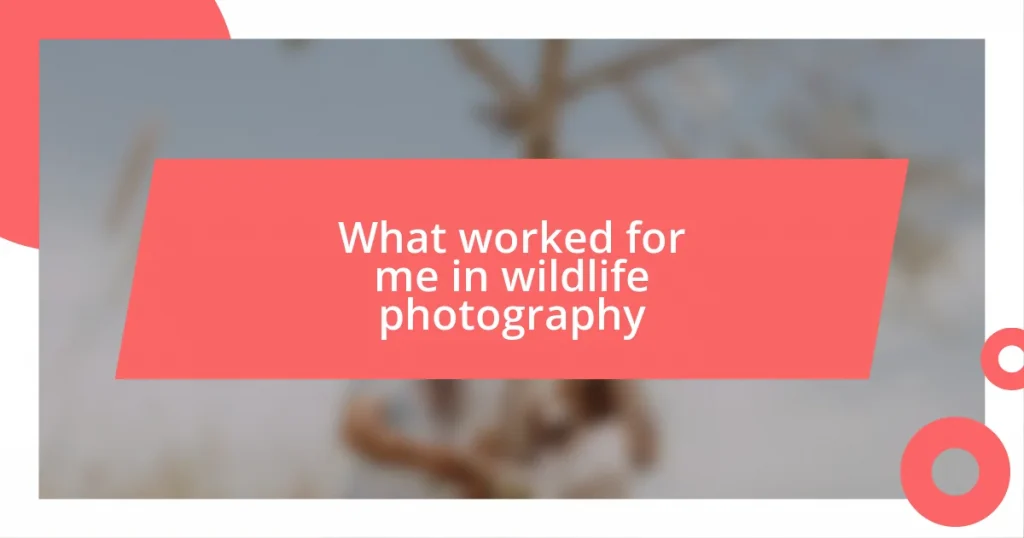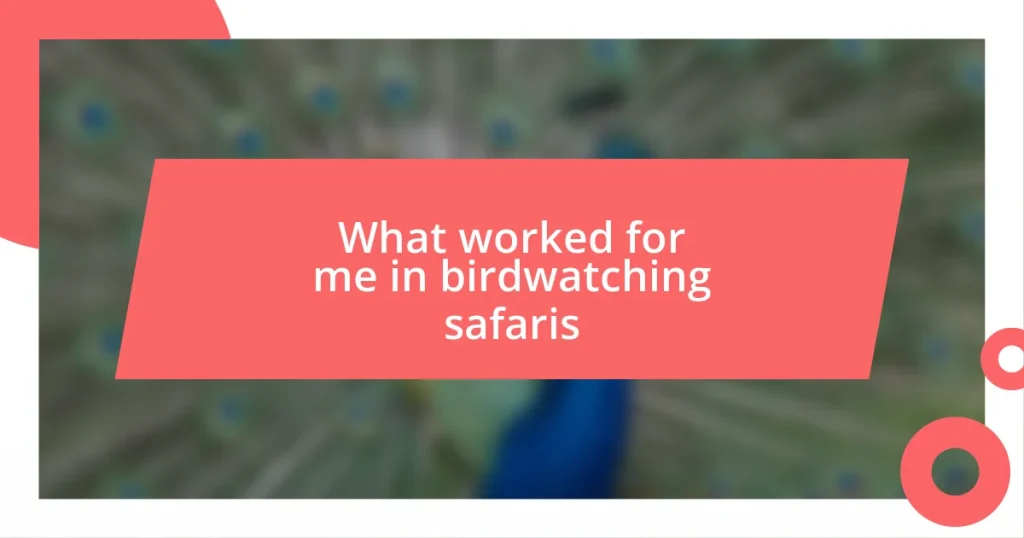Key takeaways:
- Use essential gear like a DSLR with a wide-angle lens, polarizing filter, and sturdy tripod to enhance beach photography.
- Timing is crucial; shoot during golden hours at dawn or dusk for soft light, and explore unique opportunities during midday and post-storm conditions.
- Effective composition techniques, like the rule of thirds and foreground interest, along with thoughtful editing, can elevate the storytelling aspect of your beach photos.
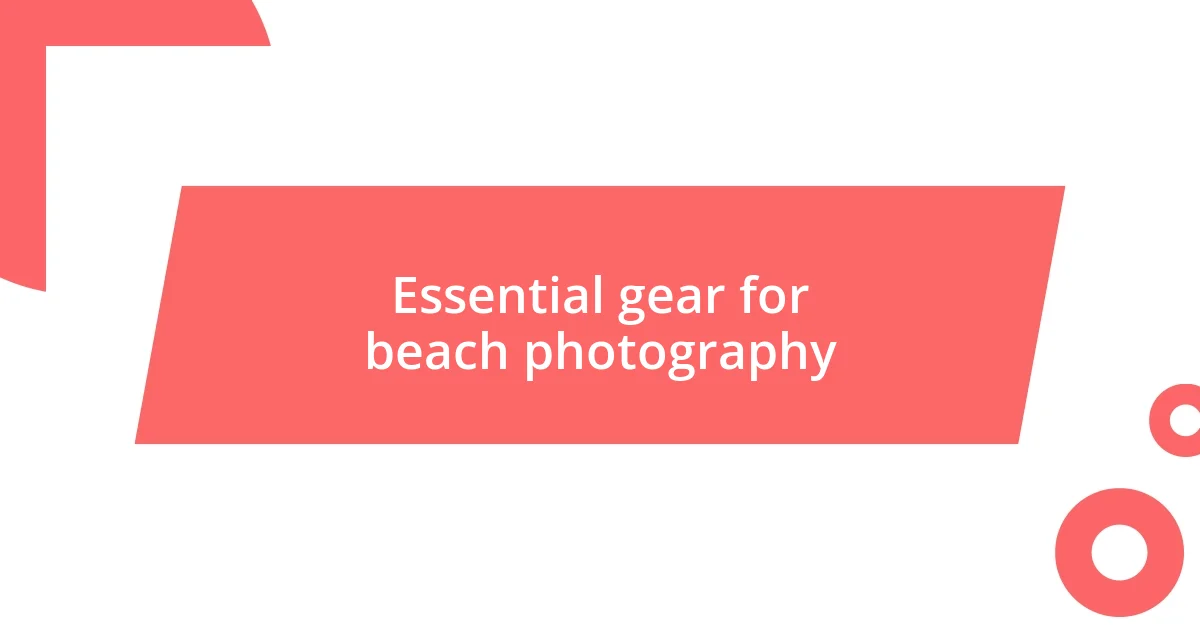
Essential gear for beach photography
When it comes to beach photography, a solid camera is your best friend. I remember the first time I took my DSLR to the beach; the vibrant colors and dynamic lighting captured my heart. However, it’s crucial to use a lens that complements the coastal scenery; I often recommend a wide-angle lens to embrace those breathtaking landscapes and seascapes.
Shooting at the beach means you’ll encounter a lot of sunlight and reflections, so don’t forget your polarizing filter. I can’t stress enough how this little accessory can transform your shots, reducing glare and making the sky pop with color. Have you ever tried shooting without one? The difference in clarity is astounding!
Lastly, I highly recommend using a sturdy tripod. I learned this the hard way while attempting to capture a sunrise. My camera was wobbling with every gust of wind, and I missed that perfectly still moment. A good tripod not only stabilizes your shots but also allows for creative long exposures, especially during golden hour when the light is just magic.

Best times for beach photography
The best times for beach photography are often at dawn and dusk, during the so-called golden hours. I still recall wandering along the shoreline at sunrise, the gentle hues of orange and pink awakening the world. This time provides the softest light, creating a dreamy atmosphere that enriches landscapes and portraits alike.
Midday, while generally regarded as less ideal due to harsh lighting, can still offer unique opportunities. I remember capturing candid moments of beach-goers having fun under the bright sun. It was then that I discovered how shadows can add drama and depth to my compositions, transforming what I once thought of as an undesired time into a chance for creativity.
Lastly, consider the tides and weather conditions, as they can dramatically affect your shots. Once, I arrived at the beach post-storm to find the sand freshly washed and glistening. The dramatic clouds overhead offered golden light filtering through, creating a stunning contrast that I hadn’t anticipated. Remember, sometimes the best photos emerge from moments you least expect!
| Time of Day | Characteristics |
|---|---|
| Golden Hour (Dawn/Dusk) | Soft, warm light; enhances colors; ideal for landscapes and portraits. |
| Midday | Harsh light; strong shadows; can create high contrast or unique shadow plays. |
| Post-Storm | Dynamic skies; glistening sand; unexpected lighting conditions. |

Composition techniques for beach shots
When composing beach shots, the rule of thirds can significantly enhance your photos. Imagine breaking your frame into a grid of nine equal sections; placing the horizon on one of the horizontal lines creates balance and draws the viewer’s eye. I remember snapping a picture of a lone surfer against the sunset, and by aligning him off-center, it made the scene feel more dynamic and alive.
Additionally, foreground interest adds depth to your images. I often find myself including seashells or driftwood in the foreground to create layers. This technique invites viewers into the scene, leading their eyes towards the main subject. Here are some composition techniques to consider:
- Rule of Thirds: Place key elements along the gridlines to create balance.
- Leading Lines: Use natural lines like waves or paths to guide the viewer’s eye toward the subject.
- Framing: Utilize natural frames like palm branches or rocks to encapsulate your main subject.
- Symmetry and Patterns: Look for reflections in the water or repeating shapes in the sand.
- Depth of Field: Play with focus to highlight your subject while softly blurring the background.
I still remember the day I focused on a family playing in the surf, positioning myself low to the ground. The splash of water captured mid-air, with a backdrop of colorful umbrellas, created a joyful chaos that resonated with the essence of a beach day. It’s those small adjustments in composition that can truly transform a simple snapshot into a memorable piece of art.

Managing light and shadows
Managing light effectively is crucial to elevating your beach photography. I learned this lesson firsthand one afternoon as I watched the sun dip low in the sky, casting long shadows along the sand. Those shadows became an essential part of my composition, leading the viewer’s eye into the scene and adding a sense of depth. Have you ever considered how much a shadow can change the mood of a picture?
On another occasion, I remember a bright midday shoot, struggling with contrasts and glare. To counteract the harsh sunlight, I sought out areas of shade provided by palm trees. This not only softened the light but also introduced interesting shadow patterns on the ground, turning an otherwise challenging scenario into an artistic opportunity. It’s amazing how a simple change in perspective can uncover unexpected beauty.
Paying attention to the direction of light can dramatically transform your shots. I often position myself so that the sunlight hits my subjects at an angle, highlighting details that might otherwise go unnoticed. For instance, capturing a child’s laughter as they splash in the waves—backlit by the sun—creates a magical halo effect. This kind of thoughtful management of light and shadows can truly elevate your photography, inviting viewers to feel the warmth of the moment.
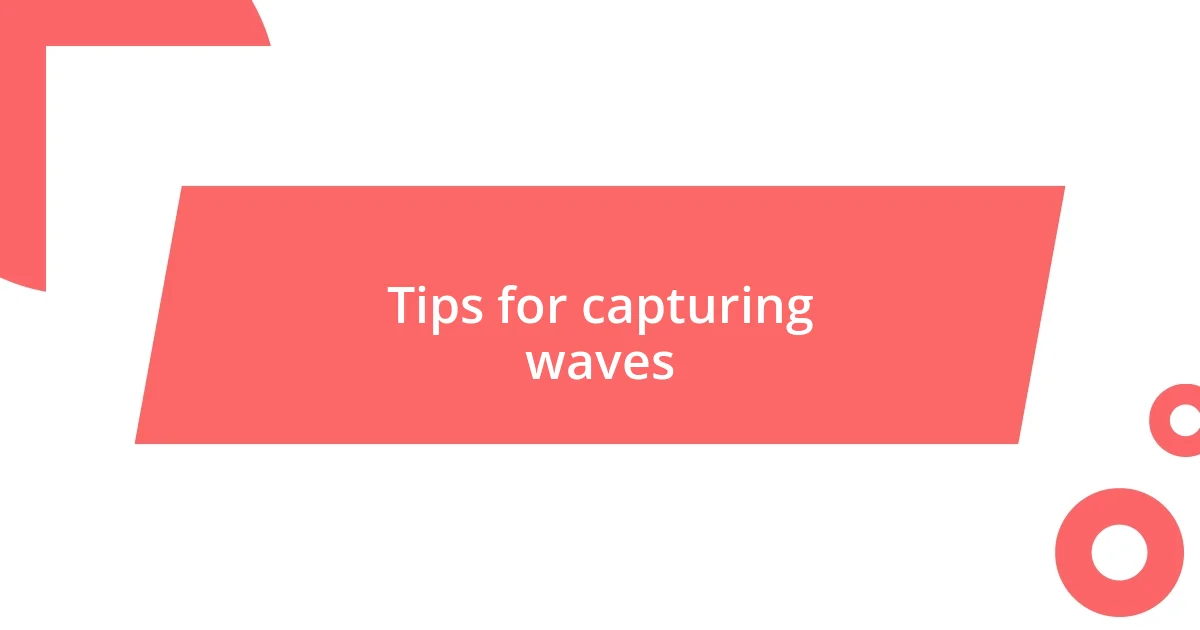
Tips for capturing waves
When capturing waves, timing is everything. I’ve often found that the magic happens just before sunset, when the golden light hits the water’s surface, creating stunning reflections. Have you ever noticed how waves appear almost ethereal during that hour? A shot I took of cascading waves during twilight is one of my favorites—the colors and motion combined to create an image that feels alive, brimming with energy.
Getting the right angle can also make a world of difference. I once crouched low to the sand, capturing the action from ground level as waves crashed nearby. The resulting shot immersed the viewer in the scene, making them feel the spray and energy of the moment. This perspective adds an element of drama that simply can’t be achieved from eye level.
Don’t shy away from experimenting with shutter speeds. I remember a day when I decided to play around with longer exposures as waves rolled in. The soft, flowing effect I achieved created a dreamy quality, transforming a chaotic surf into something almost painterly. It’s fascinating how varying the speed can evoke different emotions—what feeling do you want your viewer to walk away with? The beauty of photography lies in its capacity to tell a story through motion and stillness, and waves are passionate storytellers.
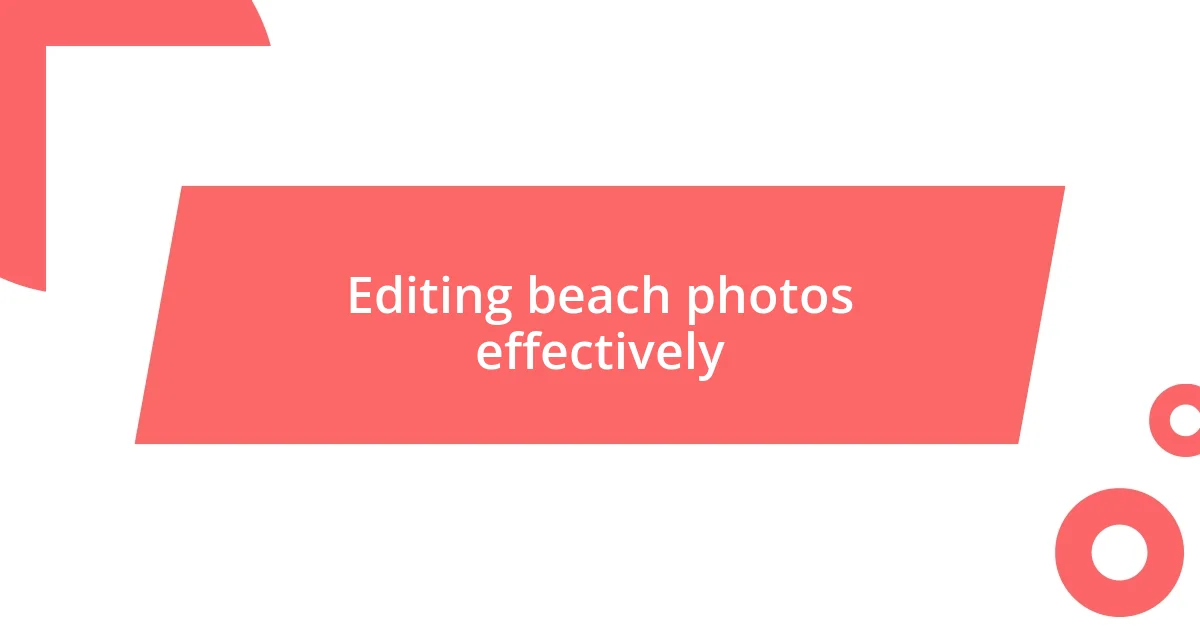
Editing beach photos effectively
Editing beach photos effectively can truly bring out the best in your captures. I remember the first time I used editing software—I was amazed at how adjusting contrast and saturation revitalized a dull beach scene. Have you ever felt a photo of yours came to life with just a few tweaks? Adding warmth can enhance the sunlight’s golden hue, making the sand look inviting and the water more vibrant, drawing viewers into that moment with you.
One practical tip I’ve discovered is to play with cropping. During one of my editing sessions, I realized that removing extraneous elements from a shot turned a busy beach landscape into a focused composition of a child building a sandcastle. It’s funny how a slight shift can tighten your image’s narrative, making the focal point stronger and more impactful. Try looking at your photos from different angles—what parts can you emphasize more with a simple crop?
Don’t underestimate the power of filters, either. I once applied a subtle vintage filter to a photo of a sunset over the ocean, and it transformed the shot into a dreamy memory. The colors blended beautifully, evoking nostalgia and warmth. Remember, though, less is often more in editing—an excessive filter can distract from the natural beauty of your shot. Finding that sweet spot between enhancement and authenticity is part of the joy of photography, wouldn’t you agree?

Showcasing your beach photography
Showcasing your beach photography can be as thrilling as capturing the images themselves. I recall the first time I created a gallery for my beach photos; it felt like sharing a piece of my soul with the world. Each photo, with its vibrant colors and textures, told a story that went beyond mere visuals—didn’t I just transport my audience back to those sun-soaked days, filled with laughter and salty air?
When displaying your work, consider the context. I once decided to print and frame a photo of a sunset over the beach and hung it in my living room. Every guest who visited was drawn in by the warmth and nostalgia of that moment, often sharing their own beach memories. Isn’t it amazing how a single image can evoke such strong feelings? Choosing the right space and medium can enhance the experience for your viewers and make your photography truly resonate with them.
Another fantastic way to showcase your beach photography is through storytelling. I often add short captions or anecdotes alongside my pictures on social media. One time, I shared a photo of footprints in the sand, explaining how it captured a fleeting moment with my family during a beach picnic. This personal touch invites others to feel a connection—not just with the image, but with the memories that shaped it. How do you narrate the emotions behind your captures?













